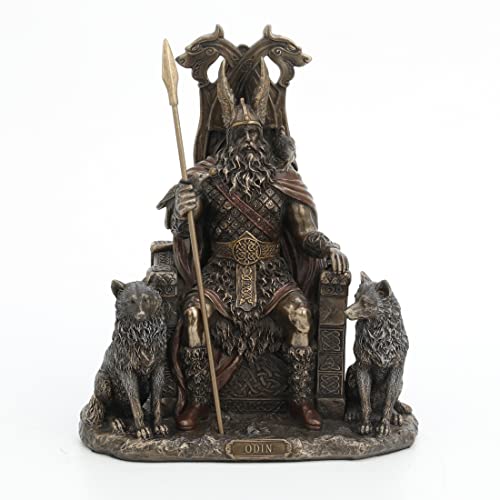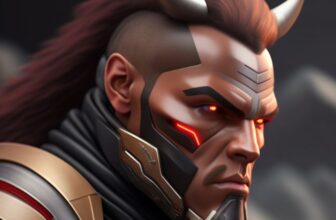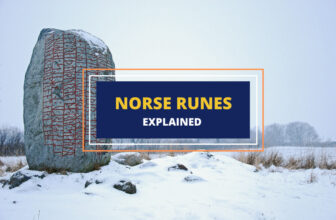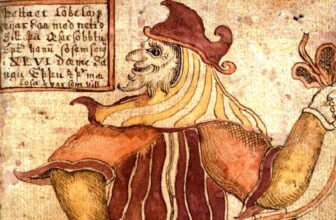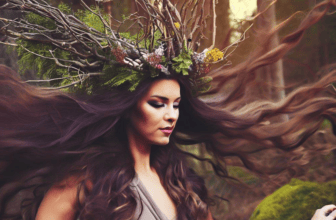
Table of Contents
Odin is best-known as the Allfather God of Norse mythology – the wise ruler of Asgard, lord of the valkyries and the dead, and a one-eyed wanderer. When viewed from the context of Norse mythology, Odin is quite different from what most people imagine today. He is a god of contradictions, creator of the world and the one who made life possible.
Odin was one of the most highly-respected and worshipped gods of the ancient Germanic people.
Odin’s Names
Odin is known by over 170 names. These include various monikers and descriptive terms. Overall, the large number of names used for Odin makes him the only Germanic god with the most known names. Some of these are Woden, Wuodan, Wuotan and Allfather.
The English weekday name Wednesday derives from the Old English word wōdnesdæg, which meant ‘day of Woden’.
Who is Odin?
The moniker “Allfather” or Alfaðir in Old Norse was given to Odin by the Icelandic author of Poetic Edda Snorri Sturluson. In these texts, Snorri describes Odin as “the father of all of the gods” and while that’s not technically true in a literal sense, Odin does assume the position of everyone’s father.
Odin is half-god and half-giant as his mother is the giantess Bestla and his father is Borr. He created the universe by killing the proto-being Ymir whose flesh became the Nine Realms.
While this makes Odin seem similar to “father” deities from other mythologies such as Zeus and Ra, he is different from them in several aspects. Unlike those deities, Odin played many roles.
Odin – Master of Ecstasy
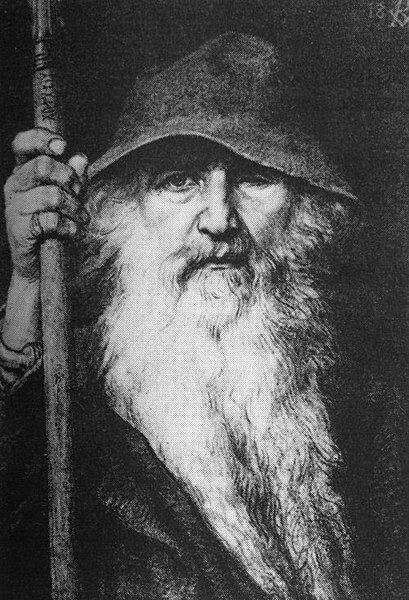
Odin’s name translates to leader of the possessed or the lord of the frenzy. The Old Norse Óðinn literally means Master of Ecstasy.
In Old Norse, the noun óðr means ecstasy, inspiration, fury while the suffix –inn means master of or an ideal example of when added to another word. Combined, they make Od-inn a Master of Ecstasy.
If you only know Odin from Anthony Hopkins’ portrayal in the MCU movies you may be confused by this. How can an old, wise, and white-bearded man be viewed as a master of ecstasy? The key difference is that what we understand as “wise” today and what the Norse viewed as “wise” a thousand years ago are two very different things.
In Norse mythology, Odin is described as a bearded old wanderer. However, he is also several other things such as:
- A ferocious warrior
- A passionate lover
- An ancient shaman
- A master of the feminine seidr magic
- A patron of poets
- A master of the dead
Odin loved wars, glorified the heroes and champions on the battlefield, and carelessly disregarded the rest.
The old Nordic and Germanic people viewed passion, ecstasy, and ferociousness as the qualities that glue the universe together and lead to the creation of life. So, naturally, they ascribed these qualities to the wise Allfather god of their religion.
Odin as a God of Kings and Criminals
As a God-king of the Æsir (Asgardian) gods and an Allfather of the world, Odin was understandably worshipped as a patron of Norse and Germanic rulers. However, he was also viewed as a patron god of criminals and outlaws.
The reason for this apparent contradiction goes back to Odin being viewed as a god of ecstasy and champion warriors. As most outlaws were expert fighters driven by passion and ferocity, their connection to Odin was quite clear. Additionally, such criminals were traveling poets and bards which is another connection with the Allfather.
Odin vs. Tyr as God of War
The “dedicated” god of war in Norse mythology is Týr. In fact, in many Germanic tribes, Týr was the chief deity before Odin’s worship rose in popularity. Odin isn’t primarily a war god but he’s also worshipped as a god of war together with Týr.
There is a distinction between the two. While Týr is a “god of war” as in “a god of the art, honor, and justice of war”, Odin embodies the mad, inhumane, and ferocious side of war. Odin doesn’t concern himself with whether a war is “just”, whether the outcome is “deserved”, and how many people die in it. Odin only cares about the passion and glory found in war. this can be compared to Athena and Ares, the Greek gods of war, who also embodied different aspects of war.
Odin was so famous as a bloodthirsty, glory-hunting war god that the famous Germanic fighers that ran into battles half-naked and high did so while screaming Odin’s name. In contrast, Týr was the war god of the more rational warriors who actually tried to live through the ordeal, who welcomed the signing of peace treaties, and who ultimately wanted to go home to their families.
Odin as the God of the Dead
As an extension of that, Odin is also a god of the dead in Norse mythology. Where in other mythologies there are separate deities of the dead such as Anubis or Hades, here Odin takes on that mantle too.
In particular, Odin is the god of the heroes who find glorious deaths on the battlefield. Once such a hero dies in battle, Odin’s valkyries fly down on their horses and take the hero’s soul to Valhalla. There, the hero gets to drink, fight, and have fun with Odin and the rest of the gods until Ragnarok.
Everyone else who doesn’t meet the “hero criterium” is of no concern to Odin – their souls will usually just end up in Helheim which is the underworld realm of Loki’s daughter, the goddess Hel.
Odin as the Wise One
Odin is also viewed as a god of wisdom and that goes beyond the “inherent wisdom” that the Norse found in passion and ecstasy. As a poet, shaman, and an old and experienced wanderer, Odin was also very wise in a more contemporary sense too.
Odin was often sought for wise advice by the other gods, heroes, or beings in Nordic legends, and he was often the one to make difficult decisions in complicated situations.
Odin wasn’t technically “A God of Wisdom” – that title belonged to Mimir. However, after Mimir’s death in the aftermath of the Æsir-Vanir War, Odin became the “recipient” of Mimir’s wisdom. There are two different myths for how that happened:
- Mimir’s Head: According to one myth, Odin preserved Mimir’s head through herbs and magical spells. This kept the god’s head in a semi-living state and allowed Odin to often ask Mimir for wisdom and advice.
- Self-Torture: In another myth, Odin hung himself on the World tree Yggdrasil and stabbing himself in the side with his Gungnir spear. He did that to acquire knowledge and wisdom. He also sacrificed one of his eyes to Mimir in exchange for a drink from the the Mímisbrunnr, a well associated with Mimir and said to be located beneath Yggdrassil. By drinking from this well, Odin was able to gain knowledge and wisdom. The lengths that Odin goes through to attain wisdom demonstrates the importance that was attributed to knowledge and wisdom.
So, while Odin wasn’t a god of wisdom, he was revered as one of the wisest gods in the Norse pantheon. Wisdom wasn’t inherent to him the way it was to Mimir but Odin was constantly seeking wisdom and knowledge. He would often assume secret identities and wander the world in search of new sources of knowledge.
- Gift of Poetry: Once, Odin disguised himself as a farmhand and introduced himself to the giant Suttung as “Bölverkr” i.e. Worker of Misfortune. He took the Mead of Poetry from Suttung and gained the gift of poetry from it. Because he owns the mead of poetry, Odin is able to grant the gift of poetry easily. He’s also said to only speak in poetry.
- Battle of Wits: In another story, Odin got into a “battle of wits” with the wise giant (or jötunn) Vafþrúðnir in an attempt to prove which of the two was wiser. Eventually, Odin tricked Vafþrúðnir by asking him a question only Odin could answer, and Vafþrúðnir admited defeat.
Odin’s Death
Like most other Norse gods, Odin meets a tragic end during Ragnarok – the Norse end of days. In the great battle between the Asgardian gods and Odin’s fallen heroes against the various giants, jötnar, and monsters from Norse legends, the gods are fated to lose but they fight heroically, nevertheless.
Odin’s fate during the great battle is to be killed by one of Loki’s children – the giant wolf Fenrir. Odin knows his fate beforehand which is why he had the wolf chained and also why he had gathered the souls of the greatest Nordic and Germanic heroes in Valhalla – to try and avoid that fate.
Predestination cannot be avoided in Norse mythology, and Fenrir manages to break free of his bonds during Ragnarok and kills the Allfather god. The wolf himself was later killed by one of Odin’s sons – Vidar, a god of vengeance and one of very few Norse deities to survive Ragnarok.
Symbolism of Odin
Odin symbolizes several important concepts but if we had to sum them up it’s safe to say that Odin symbolizes the unique worldview and philosophy of the Nordic and Germanic people.
- He was a god of wisdom who didn’t hesitate to lie and cheat
- He was the god of war, heroes, and the dead but had little regard for the common soldier’s life
- He was a patron deity of masculine warriors but happily practiced the feminine seidr magic and referred to himself as “fertilized with wisdom”
Odin defies the modern understanding of “wisdom” but fully encompasses what the Norse people understood by the word. He was an imperfect being who sought perfection and a wise sage who relished passion and ecstasy.
Odin’s Symbols
There are several symbols that are associated with Odin. These include the following:
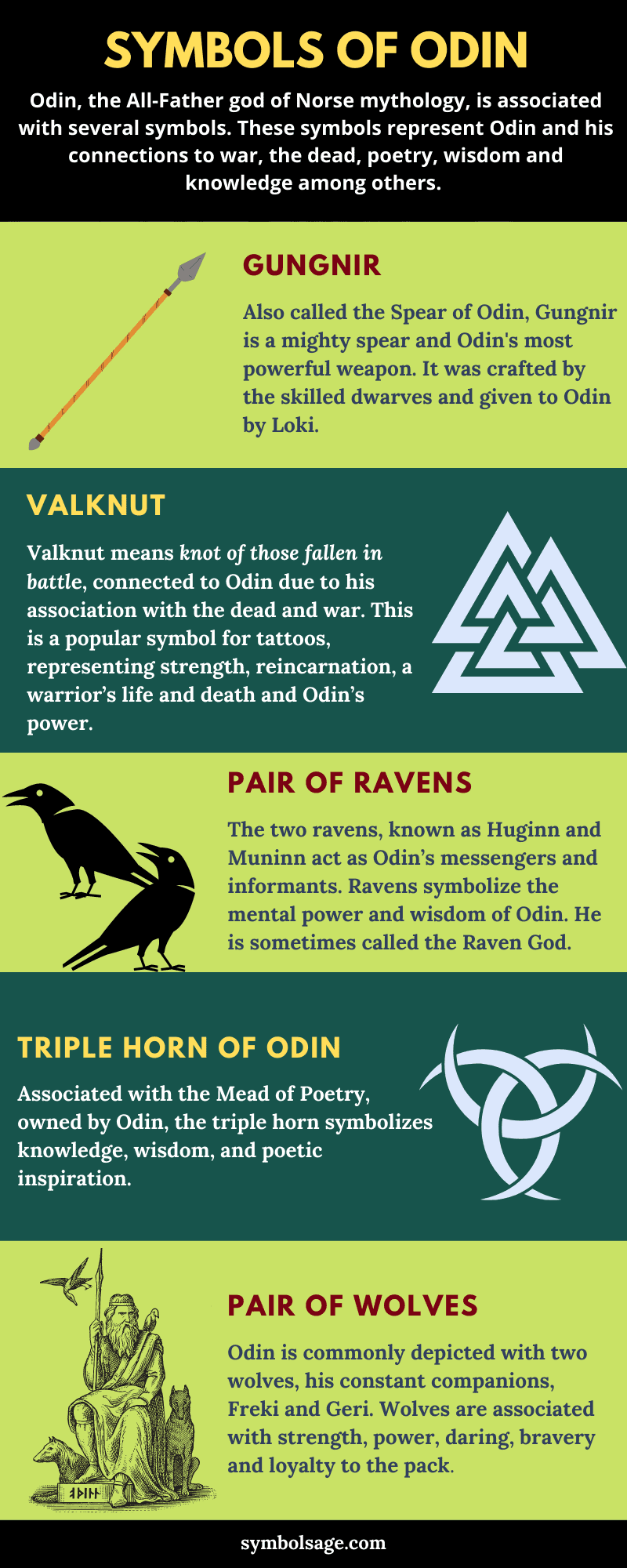
1. Gungnir
Probably the best known of all Odin’s symbols, Gungnir is the spear given to Odin by Loki, the god of mischief. It’s believed to have been forged by the group of legendary dwarves, known for their craftsmanship. Gungnir was so famous that many Nordic warriors would create similar spears for themselves.
It’s said that when Odin threw Gungnir, it would fly across the sky with a brilliant flashing light, like a meteor. Odin used Gungnir in many of his important battles, including the Vanir-Aesir war and during Ragnarok.
2. Valknut
The Valknut is a symbol featuring three interlocking triangle and means knot of those fallen in battle. While the exact meaning of the Valknut is unknown, it’s believed to symbolize a warrior’s death. The Valknut may be connected to Odin due to his association with the dead and with war. Today, this remains a popular symbol for tattoos, representing strength, reincarnation, a warrior’s life and death and Odin’s power.
3. Pair of Wolves
Odin is commonly depicted with two wolves, his constant companions, Freki and Geri. It’s said that as he wandered around, doing things that gods do, Odin became lonely and so he created Freki and Geri to keep him company. One was female and the other male, and as they travelled with Odin, they populated the earth. It’s said that humans were created after the wolves, and Odin instructed humanity to learn from the wolves about how to live. Wolves are associated with strength, power, daring, bravery and loyalty to the pack. They protect their young and fight fiercely.
4. Pair of Ravens
The two ravens, known as Huginn and Munin act as Odin’s messengers and informants. These fly around the world and bring back information to Odin, so that he’s always aware of what’s going on. Because of his association with these two ravens, Odin is sometimes referred to as the Raven God.
5. Triple Horn of Odin
The triple horn features three interlocking horns, that look somewhat similar to drinking goblets. This symbol is associated with the mead of poetry and with Odin’s insatiable desire for wisdom. According to one Nordic myth, Odin sought the magical vats which were said to hold the mead of poetry. The triple horn represents the vats which hed the mead. By extension, it symbolizes wisdom and poetic inspiration.
Importance of Odin in Modern Culture
As one of the most famous deities in the Norse pantheon of gods and one of the most well-known gods among the thousands of human religions, Odin has been portrayed in numerous literary works and cultural pieces throughout the ages.
He is featured in countless paintings, poems, songs, and novels through the 18th, 19th, and 20th centuries such as The Ring of the Nibelungs (1848–1874) by Richard Wagner and the comedy Der entfesselte Wotan (1923) by Ernst Toller, to name a few.
In recent years, he has also been featured in many video games with Norse motifs such as God of War, Age of Mythology, and others.
To younger people, the character is usually best-known for his part in the Marvel comic-books about Thor as well as the MCU films where he was portrayed by Sir Anthony Hopkins. While many lovers of Norse mythology malign this portrayal because of how inaccurate it is to the original myths, this inaccuracy can also be viewed as a positive.
The contrast between the MCU Odin and the Nordic and Germanic Odin perfectly exemplifies the differences between modern western culture’s understanding of “wisdom” and what the ancient Norse and Germanic people understood by the word.
Below is a list of the editor’s top picks featuring Odin’s statue.
Wrapping Up
Odin remains one of the most well-known and famous gods from all ancient religions. It’s Odin who created the world and made life possible with his ecstasy, insight, clarity and wisdom. He embodies many contradictory qualities at the same time, but remained revered, worshipped and highly-respected by the Nordic people for centuries.






